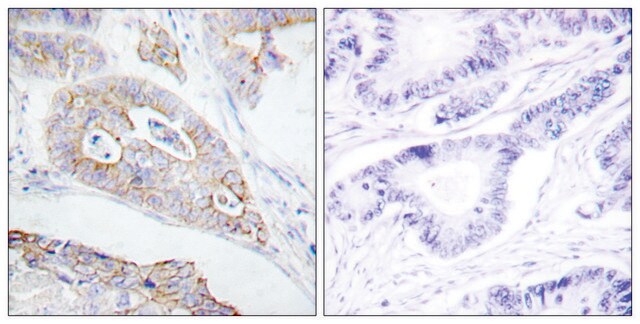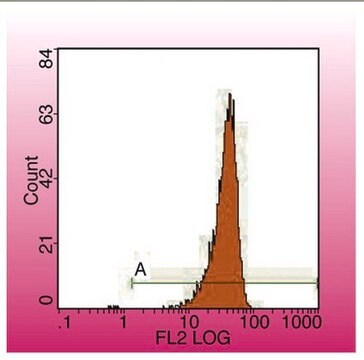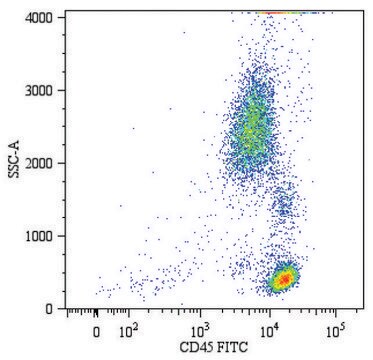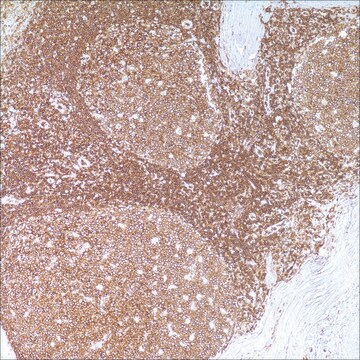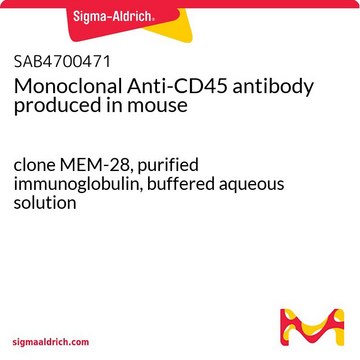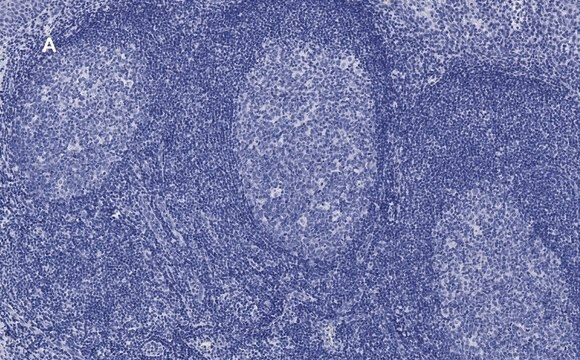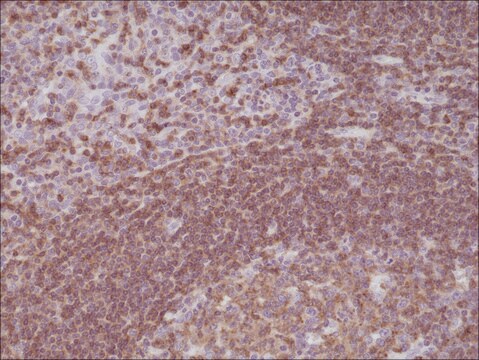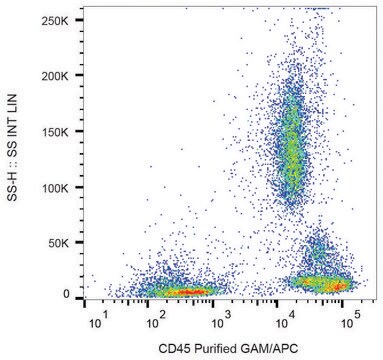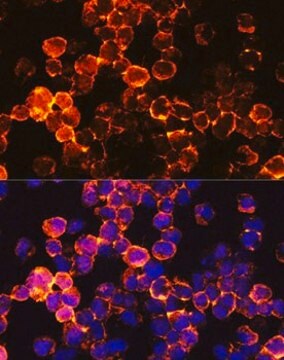05-1410-M
Anti-CD45 Antibody, clone F10-89-4
clone F10-89-4, from mouse, purified by affinity chromatography
Synonyme(s) :
CD45 antigen, Leukocyte common antigen precursor, SCID due to PTPRC deficiency, T200 glycoprotein, T200 leukocyte common antigen, Human homolog of severe combined immunodeficiency due to PTPRC deficiency, Leukocyte-common antigen, Protein tyrosine phosph
About This Item
Produits recommandés
Source biologique
mouse
Niveau de qualité
Forme d'anticorps
affinity isolated antibody
Type de produit anticorps
primary antibodies
Clone
F10-89-4, monoclonal
Produit purifié par
affinity chromatography
Espèces réactives
mouse
Réactivité de l'espèce (prédite par homologie)
human, rat
Technique(s)
flow cytometry: suitable
immunofluorescence: suitable
immunohistochemistry: suitable (paraffin)
immunoprecipitation (IP): suitable
western blot: suitable
Isotype
IgG2a
Numéro d'accès NCBI
Numéro d'accès UniProt
Modification post-traductionnelle de la cible
unmodified
Informations sur le gène
human ... PTPRC(5788)
Description générale
Spécificité
The LCA comprises of at least 5 isoforms ranging from 180-220 kDa which are produced as a result of alternative splicing of exons A, B or C. CBL 124 recognizes epitopes common to
all of the isoforms.
Antigen distribution:
Thymocytes >95%
Granulocytes >95%
Monocytes >95%
B cells (CD20+) >95%
T cells (CD3+) >95%
NK cells (CD16+) >95%
Peripheral blood lymphocytes >95%
FUSION PARTNER: NS1 myeloma cell line
Immunogène
Application
Immunohistochemistry (paraffin): A previous lot of this antibody was used in the discrimination between malignant cells of haematopoietic origin and other malignancies in frozen tissue sections.
Immunoprecipitation: A previous lot of this antibody was used in studies of the leucocyte common antigen complex and its identification by the Western blotting technique.
Flow Cytometry: Studies of CD45 expression and the association with T-cell receptor signaling was performed using this antibody of previous lot.
Studies of the mechanism by which CD45 regulates B cell activation through protein tyrosine phospatases.
Optimal working dilutions must be determined by the end user.
Immunohistochemistry(paraffin): Representative testing from a previous lot.
Optimal Staining of CD45 Monoclonal Antibody: Tonsil
Signaling
Immunological Signaling
Qualité
Western Blot Analysis: 1:500 dilution of this lot detected CD45 on 10 μg of Jurkat lysates
Description de la cible
Liaison
Forme physique
We recommend that each laboratory determine an optimum working titre for use in its particular application.
Stockage et stabilité
Handling Recommendations: Upon first thaw, and prior to removing the cap, centrifuge the vial and gently mix the solution. Aliquot into microcentrifuge tubes and store at -20°C. Avoid repeated freeze/thaw cycles, which may damage IgG and affect product performance.
Remarque sur l'analyse
Jurkat cell lysate
Autres remarques
Clause de non-responsabilité
Vous ne trouvez pas le bon produit ?
Essayez notre Outil de sélection de produits.
Code de la classe de stockage
12 - Non Combustible Liquids
Classe de danger pour l'eau (WGK)
WGK 2
Point d'éclair (°F)
Not applicable
Point d'éclair (°C)
Not applicable
Certificats d'analyse (COA)
Recherchez un Certificats d'analyse (COA) en saisissant le numéro de lot du produit. Les numéros de lot figurent sur l'étiquette du produit après les mots "Lot" ou "Batch".
Déjà en possession de ce produit ?
Retrouvez la documentation relative aux produits que vous avez récemment achetés dans la Bibliothèque de documents.
Notre équipe de scientifiques dispose d'une expérience dans tous les secteurs de la recherche, notamment en sciences de la vie, science des matériaux, synthèse chimique, chromatographie, analyse et dans de nombreux autres domaines..
Contacter notre Service technique